Shutters, a solid or slanted window cover, can be an architectural detail that pulls a home’s architecture together. Originally designed in Greece to control light, ventilation, provide privacy, and help protect a home against weather, shutters have gone through their own evolution over time. Here is an aspirational selection of projects where this element enhances the appearance of a building.
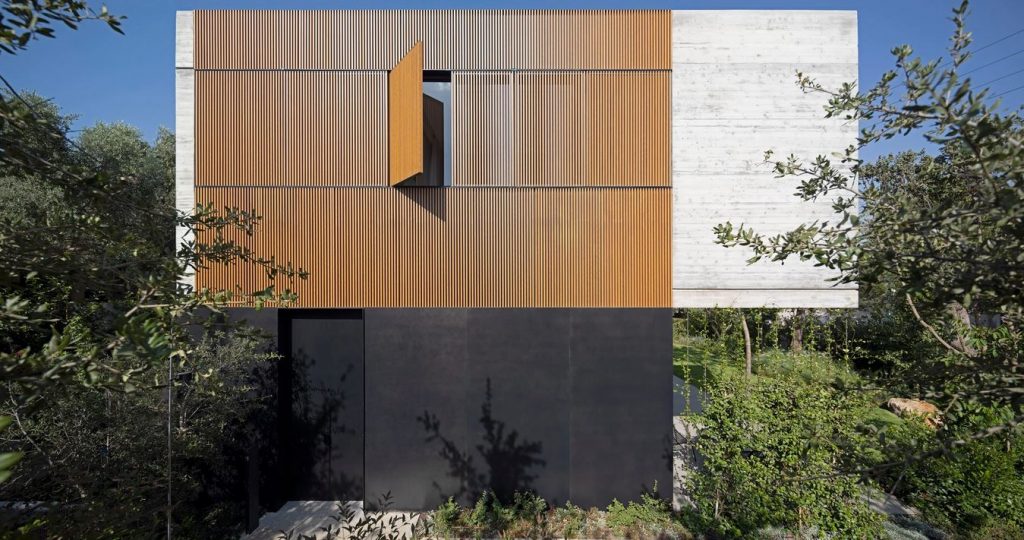
Israeli studio Pitsou Kedem Architects has used a dynamic shutter system in the Wood Slatted House on the outskirts of Tel Aviv to balance a desire for privacy with a close connection to the garden. Created in in collaboration with architect Tamar Berger, the 500-square-metre detached house was designed for the twin brother of the studio’s founder, Pitsou Kedem.
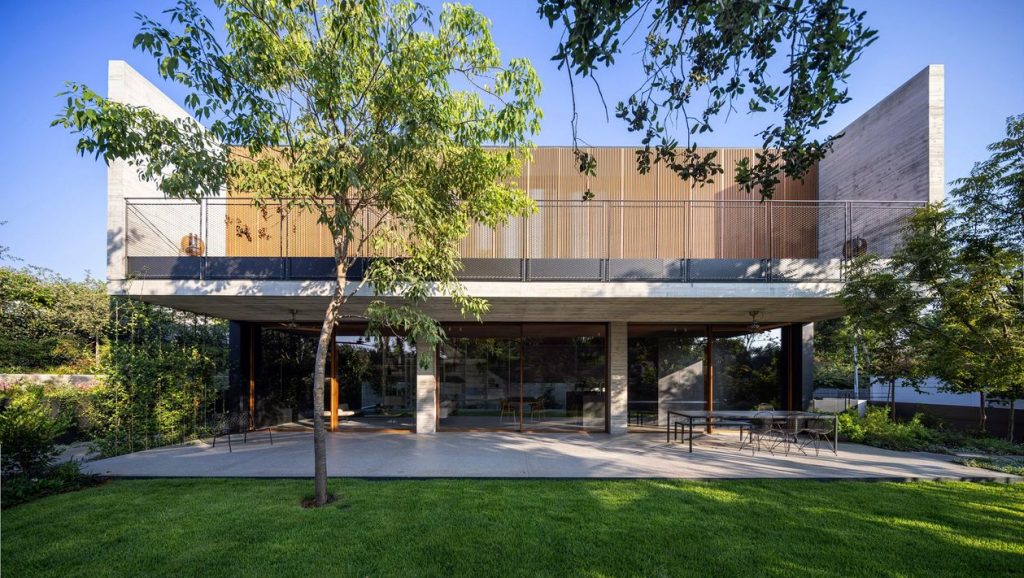
Wood Slatted House by Pitsou Kedem (also header image)
The team has topped an exposed, glazed ground floor that houses a large living, kitchen and dining space with an overhanging concrete upper storey that accommodates the main en-suite bedroom and a smaller children’s bedroom.
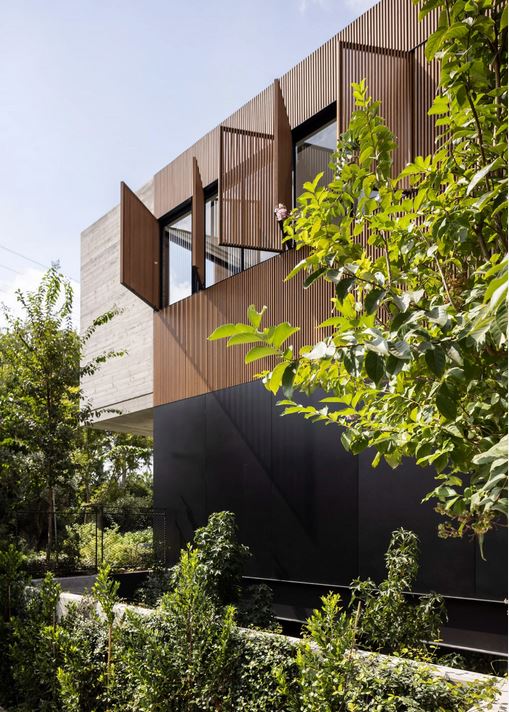
Wood Slatted House by Pitsou Kedem
The upper level is covered by a smart combination of timber louvred screens and functional slatted shutters. The folding shutters alongside sliding glass doors let the occupants mediate light and air, while allowing each room on the southern side open up onto a large terrace.
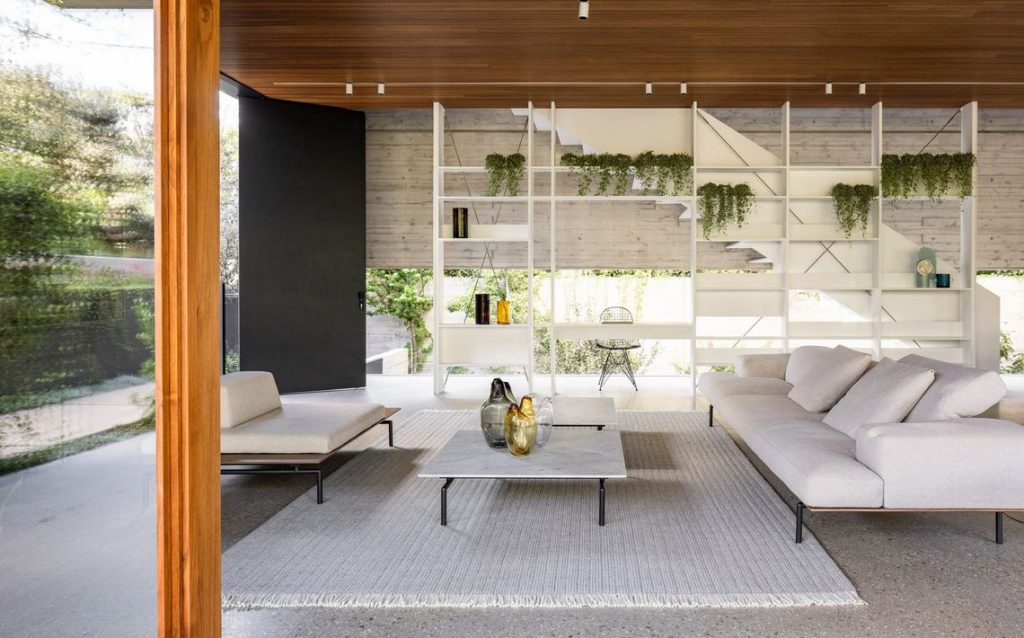
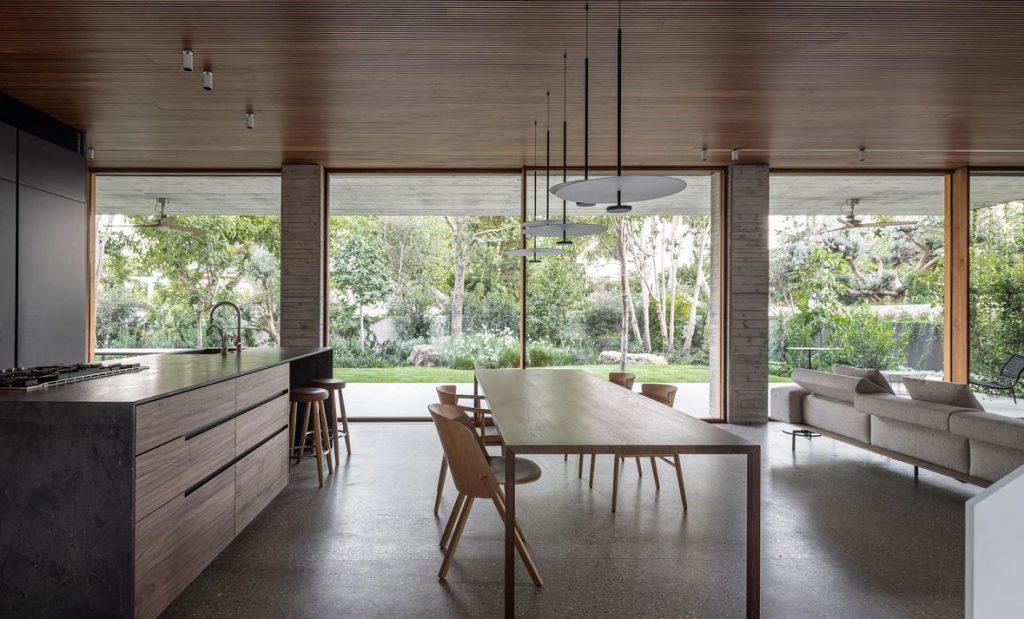
Wood Slatted House by Pitsou Kedem
In this project, the wooden shutters allow the filtering of sunlight without blocking airflow into and through the house, while also giving its residents the means to control their level of privacy in the different spaces within the house.
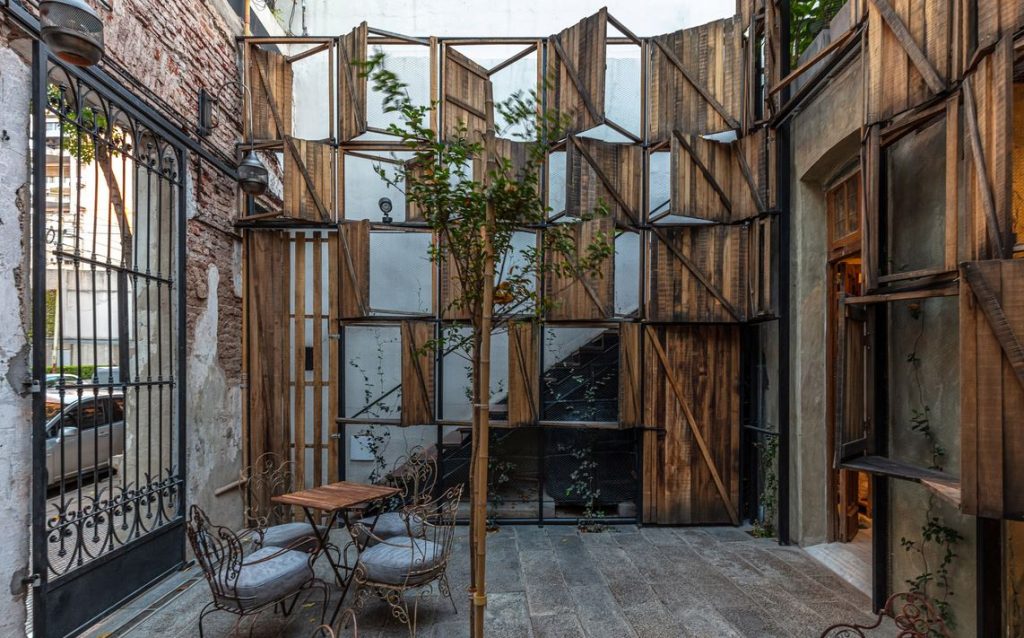
Moshu by Hitzig Militello
When designing Moshu Treehouse restaurant, Buenos Aires based studio Hitzig Militello Architects has opted for shutters wishing to replicate the decades-old experience of a traditional Argentinian house built around a courtyard. Such courtyards normally become the main gathering area for socialising.
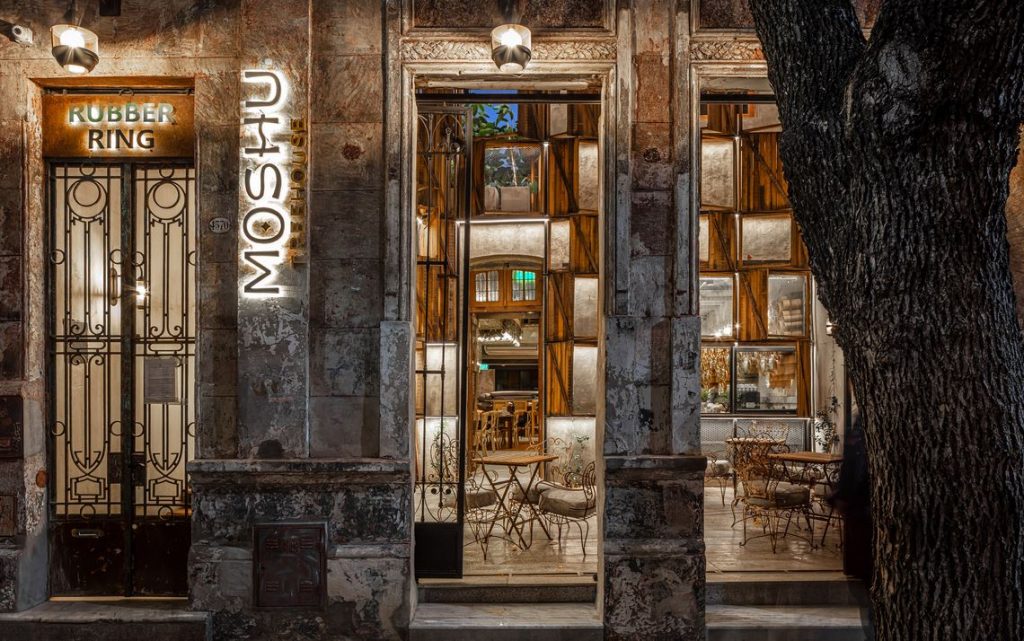
Moshu by Hitzig Militello
Commissioned to repurpose a historic two-storey house in the Palermo neighbourhood of the Argentinian capital into a restaurant, the architects have created a new courtyard area at the entrance immediately adjacent to the original facade of the building. This allowed for a new facade with a language of its own, the core idea behind it being the preservation of the old style of the original structure.
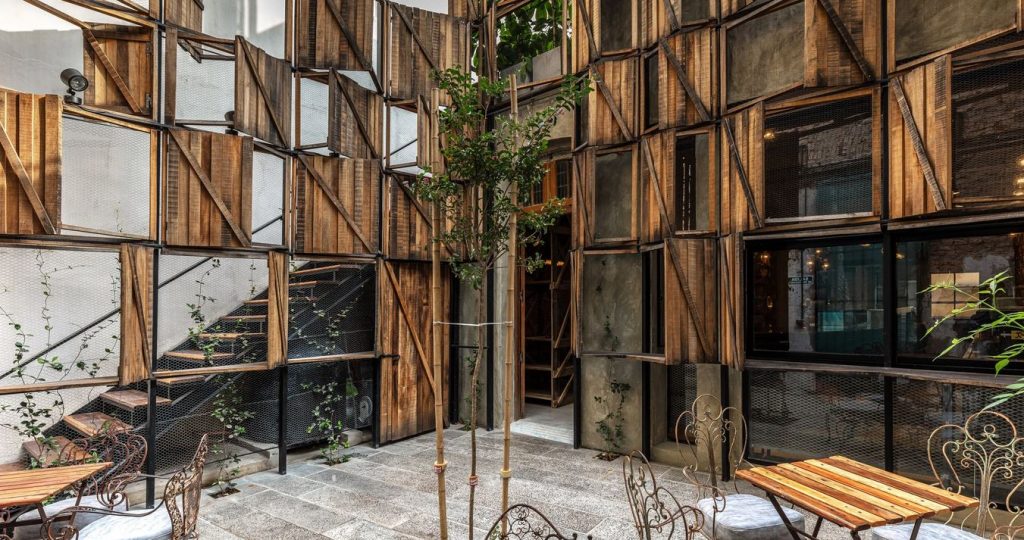
Moshu by Hitzig Militello
This new access courtyard allows visitors to enter the restaurant in two different ways: into the primary courtyard or up a set up stairs to access the second floor where a cocktail bar is located, which spills out onto a terrace overlooking the front of the building. Besides, this solution is intended to facilitate carryout orders and outdoor dining.
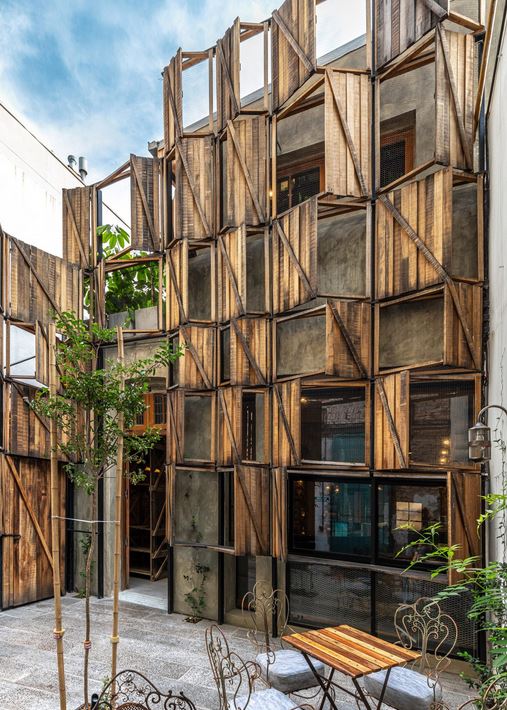
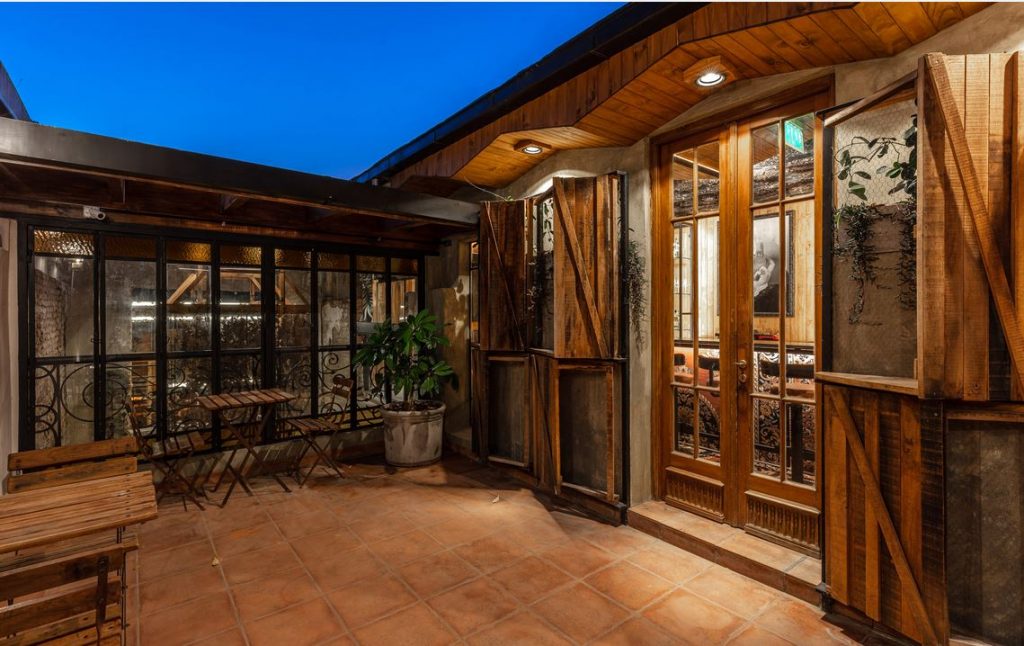
Moshu by Hitzig Militello
The part of the exterior is composed of a grid of windows with operable wooden shutters that are slightly angled and offset from one another, creating a dynamic and irregular composition. These can be opened up to let the air in, or closed in bad weather.
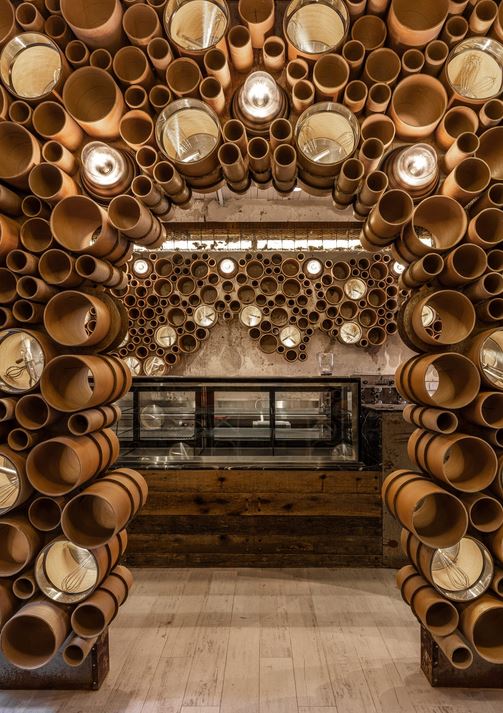
Moshu by Hitzig Militello
The interiors preserve many of the raw finishes from the existing rundown building. The team also added some playful features to the interiors, including an archway made of different sizes of tubes.

H house by AD9 Architects
A façade of eight revolving wooden shutters of H house designed by local studio AD9 Architects in Ho Chi Minh city, Vietnam, creates an illusion of the house breathing and changing. This dynamic system also regulates other environmental factors such as noise, dust, typical for this urbanized area of downtown Saigon, and the changing weather.

H house by AD9 Architects
Developed for a young married couple working in the creative field, the design is inspired by traditional houses of Central Vietnam, with the different layers arranged in a way that brings a positive vibe to the daily activities. Natural light travels from the outside to the inside, from the top to the bottom, throughout the different times of the day, intertwining with the green space of trees and plants to erase the border between the interior and the garden reserved for planting trees and vegetables, and relaxation.


H house by AD9 Architects
The interior space is a natural continuation of the outside area, creating a small journey to experience the house at different times of the day and bringing a different feel at each moment. The areas are harmoniously connected, the private and common areas carefully planned for daily activities, with the trees and light playing a very important role.